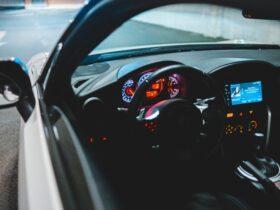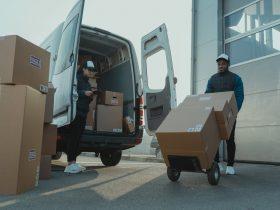Keeping this in mind, Mihnea de Vries, a California-based serial entrepreneur with over 20 years of experience in different areas of tech, marketing and filmmaking, in 2016 decided to build Scooterson, a smart electric scooter
Rolley Scooterson is an intelligent electric kick-scooter with no gear shifter and no acceleration lever. The 20-kg scooter, made from aerospace grade materials, uses a unique combination of cloud and smartphone technology alongside big data analysis for a safe and efficient ride.
The world’s first intelligent scooter understands how fast to go by analysing a rider’s body movements. What else can it do? It can look for parking spots and reach your destination from where you want to be picked. It can also be shared with friends and family with a mobile app.
In the long term, the Scooterson team wants to converge the three verticals of electric vehicles, self-driving and ride-sharing, to create the best user experience.
The Rolley project
Mihnea started the company along with his friend and ex-band mate, Flavius Balaj, as a side project. He happened to meet Deepansh Jain at a tech conference and roped him in as a co-founder.
Deepansh, who had founded Shifu, an artificial intelligence (AI) assistant app that was later acquired by Paytm, was exploring different avenues. During the course of their conversation, the duo began talking about the uses of AI and how it could help change the way people ride. They spoke about how AI could improve the energy efficiency of electric vehicles.

“We wanted a really cool-looking electric scooter for ourselves. When the first prototype was ready and we start testing it on the streets, we realised how many people wanted it. So many people approached us with questions and we knew there was a demand,” Mihnea says.
Later, the founders realised that it might be seen as just another electric scooter and the company couldn’t scale enough to really make a difference in the way people move around in cities.
Deepansh says a question followed: “What will happen to two-wheeler vehicles if they remain dumb in the era of self-driving cars, shared mobility and AI?”
The founders understood that solving this quest would “change the way we move around in cities”.
The market in India and e-scooters
The trio had realised that there were a few problems with the existing system. The issue with e-scooters is that certain skills are needed to ride a two-wheeled vehicle and access to e-scooters is limited.
But India is slowly witnessing a positive trend in the electric vehicle market. According to a report by Society of Manufacturers of Electric Vehicles, electronic vehicle sales in India grew 37.5 percent to 22,000 units in the year ended March 2016.
With sales of over 17.6 million scooters between 2016 and 2017 in India, it is no surprise that there are a growing number of electric two-wheeler manufacturing startups in India.

Gujarat-based Yo Bykes pioneered the electric scooter in India. Coimbatore-based EV startup Ampere Electric has developed electric cycles, electric two-wheelers and e-scooters. The company also claims to be the first to make their own chargers (36V and 48V) for e-vehicles.
Ather Energy claims that, unlike other players, its S340 offers a connected ride experience with features such as onboard navigation, personalised profiles, a top speed of 72 kmph and sub-one-hour charging.
Other players in the space include Hero RNT Diesel Hybrid Scooter, Hero Splendor iSmart, Hero Leap, Mahindra GenZe, TVS Qube and Hyosung ST-E3 EVA.
How does it work?
With the need to focus on a lease-like model, the team at Scooterson decided to come up with an additional subscription-based ownership option for a two-wheeled vehicle. The team knew that electricity would be economical as the cost to ride 100 km is just 19 cents globally or Rs 5 in India.
With Scooterson, a rider rides as he or she would ride any regular kick-scooter – but there aren’t any acceleration levers or gear changers.

“So you just sit and move,” Deepansh says.
The Scooterson App will automatically start Rolley when you are within activation range. Using its knowledge of your daily habits it can predict and suggest your most likely destination. The Predictive Routing becomes increasingly accurate and is used by other smart features to increase energy efficiency and safety, based on riding patterns, rider profile and surrounding terrain.
The app also adapts power and torque settings to perfectly match with remaining battery levels.
“So you are able to ride at peak performance without draining batteries before arriving at your destination. The flipside is that when the battery is low, the app will drop the settings to an energy conservation mode that will allow you to arrive at your destination before the battery dies,” Deepansh adds.
The vehicle follows a truly predictive model; the more one rides, the more information the app gathers and stores on the cloud. After a while, by leveraging this data, it will create a new optimised powertrain profile that is based on your riding patterns, weight and surrounding terrain specifics. You can have multiple powertrain profiles, optimised for better performance or for more range.
Connecting friends and family
Scooterson connects to smartphones and smartwatches to display speed, battery status, ride statistics and other traffic-relevant data acquired from the cloud. The app continuously tracks the status of your scooter and connects to the cloud to receive rider’s optimised and personalised torque and power settings, as well as software updates.
Using the app, your friends and colleagues can request access to use the scooter. The cloud-based sharing management system will send you a notification to grant them access. The app will unlock your scooter, pair it with your friend’s smartphone and allow the use of all predefined features accessible to a guest user. The system will also notify your friend about the time they can use the vehicle for, and will remind them when time’s nearly up.
“You don’t need to worry about the safety of your scooter. Your smartphone or watch acts as a key when the device is located within the predefined auto lock-unlock range. The security mode will automatically activate when you move a short distance from the scooter,” Deepansh says.
The owner is also notified if the scooter is tampered with or moved from the last parked position. The built-in GPS signal can be tracked live on the owner’s mobile device if the vehicle is stolen.
Because Scooterson does not have a throttle, the rider has to push with his feet until a 3.5 mph (5km/h) speed threshold. The motor assistance kicks in only over this speed. There is also a “low power assistance” mode and riders have to push with their feet from time to time, even beyond the speed threshold.
“Scooterson is the first company to offer a subscription-based ownership option for a two-wheeled vehicle, after a few major car automakers started the trend in 2017. The $99/month subscription comes with theft insurance and unlimited maintenance included. For sales, the promotional price is $1,990 for the first 1,000 units, after which the product is priced at $2,490,” Deepansh says.
The team claims to have had over pre-sales worth $2 million as of May this year. In the near future, the team aims to be a leader in the intelligent two-wheeler market.
A scooter that’s smart and connected – it’s sure to wire you up for a great ride in urban agglomerates as well as small towns.


















